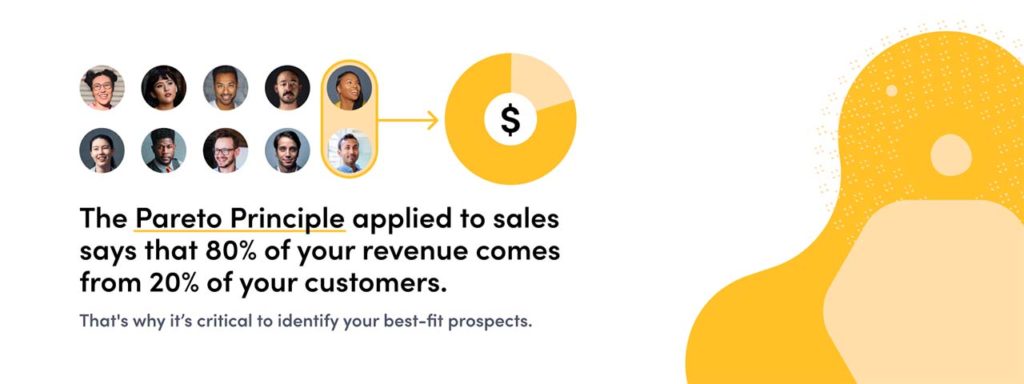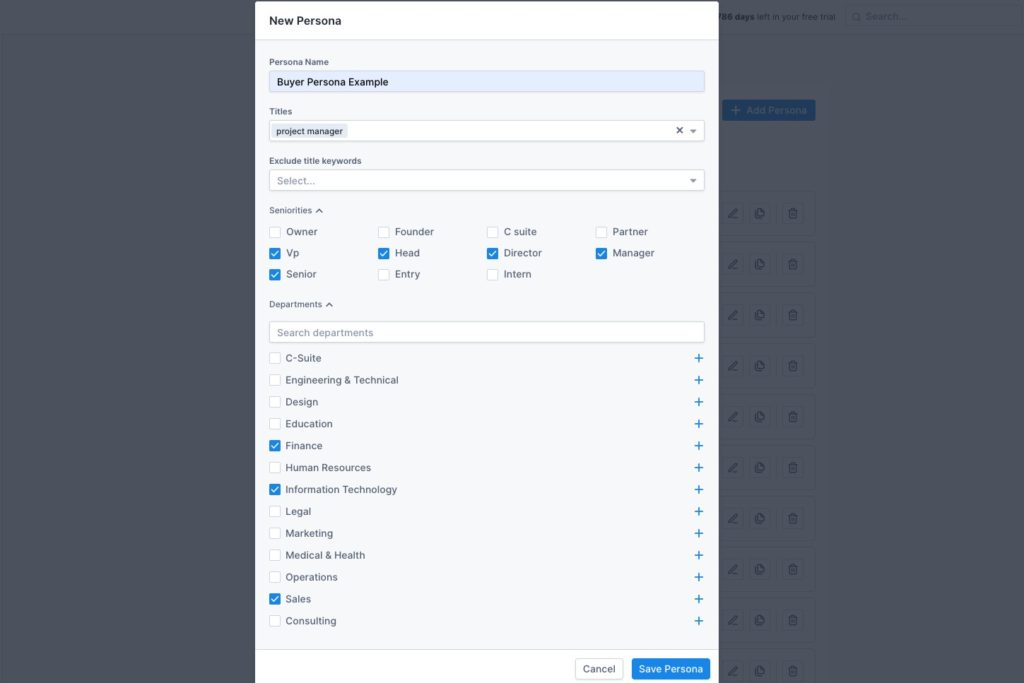How to Qualify Prospects with Apollo
Interested in closing more deals? It starts and ends with your qualification process. Learn how to qualify prospects with Apollo here.
5 Minute Read
Written by Karli Stone
Published Thursday, February 10, 2022
Office spaces are ghost towns. Communal spaces are empty. In-person events are long canceled.
In the era of COVID, finding leads and making connections has become a fully digital affair. There are fewer in-person opportunities, and traditional lead qualification methods are becoming obsolete.
A study from McKinsey has found that today’s sales reps are spending over double the amount of time that they spent pre-COVID on digitally identifying and qualifying prospects.
This is due to both an increase in online buyer activity, as well as inefficient lead qualification methods.
When you let bad-fit prospects into your sales funnel, you waste valuable resources. But many sales managers struggle with building a reliable sales qualification process that stops unqualified leads from ever entering (especially in these tumultuous times!).
That’s why we’ve created this guide. Keep reading to learn more about qualifying the right prospects and how Apollo can help you convert them into paying customers.
Why is lead qualification important?
Let’s get technical…
A sales qualified lead (SQL) is a lead that closely matches one of your buyer personas. It is a prospective customer who has been vetted and is ready to talk to a sales team and enter the sales funnel.
When a lead becomes sales qualified, they can be accurately referred to as a ‘prospect’ and a good potential customer.
But why is it important to invest precious time and resources into qualifying prospects? Couldn’t sales teams treat every lead like a SQL and see what sticks?
No. No, they can’t.
According to the Pareto Principle (or the 80/20 rule), 80% of your company’s sales come from 20% of your customers.
It’s a small base of customers that have the most interest in your solutions. And if you aren’t identifying and attracting high-quality leads that have similar interests to your top customers, you’re only wasting time.

When you dedicate yourself to lead qualification, it allows you to focus on the opportunities that matter. If you try to treat every lead like you would a qualified prospect, you’ll lose high-value opportunities due to a lack of time and resources.
A qualifying process also helps you:
- Close more deals that last. If you have too many leads in your sales pipeline, you won’t be able to thoroughly nurture them. You may be able to close a deal that provides short-term value, but if they cancel a few weeks later, was it really worth it? Qualifying prospects results in happy, long-term relationships.
- Boost win rates. Studies have found that focusing on high-quality lead qualification raises conversion rates by 30% (no surprises there).
- Personalize messaging. When you qualify leads, you get a deeper look into their problems and pain points. This knowledge enables you to create personalized messaging and pitch relevant solutions.
Qualification frameworks
Qualifying prospects isn’t a one-size-fits-all solution. Every organization is looking for specific lead characteristics that fit their ideal customer profiles.
This is where a qualification framework comes in handy.
A qualification framework is essentially a rubric that salespeople can use to determine whether or not a lead should be a sales-qualified prospect. Implementing the right one will help sales teams to qualify their leads as efficiently and consistently as possible.
Subscribe for weekly updates
Let’s take a look at some of the most utilized lead qualification frameworks:
B.A.N.T.
The BANT framework is one of the oldest methods for determining good-fit prospects:
| Budget | How much is the lead willing to spend? Where does their funding come from? Is there any flexibility? |
| Authority | Is the lead the decision-maker for purchasing your product or service? (Keep in mind buying authority could be more than one person. Make sure you engage all relevant stakeholders early in the buying process.) |
| Need | What challenge are they facing? Will your product or service solve the lead’s business need or address one of their pain points? |
| Timeline | Will the lead implement your product or service in the near future? |
While BANT can be a helpful tool for initial qualification, it’s very linear. If you choose to adopt it, you’ll want to dig in a little deeper and/or make adjustments to the framework so it better fits your goals and buyer personas.
M.E.D.D.I.C.C
While BANT focuses on a lead’s budget and authority, the MEDDICC framework is more concerned with the value that your product or service can provide to a lead. It requires sales reps to understand every aspect of a target company’s purchase process.
| Metrics | How much money will your product or service make or save the lead’s company? |
| Economic Buyer | Who has profit and loss responsibility for this? |
| Decision Criteria | What are their technical, vendor, and financial criteria? |
| Decision Process | What is the process like for the lead to approve purchase of your product? |
| Identify Pain | What are their primary business objectives? |
| Champion | Who will sell on your behalf? |
| Competition | Who are we competing against and why? |
This framework hones in on the lead’s unique situation and decision-making process.
And it can be especially valuable for increasing forecasting accuracy, which is especially crucial if you are selling to large enterprise companies.
F.A.I.N.T.
The RAIN Group is a big advocate for using FAINT to qualify sales leads. Here is the breakdown:
| Funds | Does this buyer have the financial capacity to buy? |
| Authority | Is this a decision-maker for buying your solution? |
| Interest | Through your education of how your solution can help the buyer achieve a new and better reality, have you generated an interest? |
| Need | What are their specific needs and how can you meet them? |
| Timing | Has buying intent been generated and what is the specific timeline to do so? |
The idea behind FAINT is that many purchase decisions are unplanned and don’t have an allocated budget. It instead focuses on overall cash flow and places more emphasis on generating the interest of an ultimate decision-maker.
Overall, lead qualification frameworks can give you a lot of structure, but they aren’t designed to be adopted into your prospecting process down to the tee. Analyze your buyer personas, along with your sales goals, and use these frameworks to create a reliable, data-driven process for deciding which leads to pursue.
How to qualify prospects with Apollo
Deciding on your lead qualification criteria is just the half of it. You need a reliable database to give you the answers to those questions.
When you use Apollo, you have access to in-depth data points on over 220M contacts across 29M companies. Chances are, everything you need to know about your list of leads is in the Apollo database.
Byron Sierra-Mattos, an Enterprise Account Executive at Apollo, has witnessed enormous success from the accounts that use Apollo for qualifying prospects.
“Discovery calls are two minutes long when you use Apollo to do your research,” Sierra-Mattos said, “By the time your leads are talking to you, you’ll know if they use Salesforce, if they use HubSpot, if they are currently hiring, how many salespeople they have because it is all in Apollo.”
This is why salespeople love us. When you prospect in the Apollo database, you are qualifying leads simultaneously!
We’ll show you what we mean…
Start by creating a buyer persona by navigating to Settings > Personas. Your persona should reflect your ideal customer profile. It should include all of the attributes you need for a contact to be considered a sales-qualified prospect.

Once you save your persona, you can now use it to qualify contacts as you prospect on the Searcher.

Clicking on any of these contacts will direct you to their Apollo page. Here you can see employment history, in-depth company data, job postings, funding rounds, technologies used, employee metrics, and all the information you need to efficiently qualify prospects.
And, beyond this, a world of meaningful engagement awaits!
You can put these contacts into target lists, add them to specific sales sequences, instantly find verified email addresses and phone numbers, create new email campaigns, conduct further research on LinkedIn using the Apollo Chrome Extension, and so much more.
At the end of the day, you can rest assured knowing that when you prospect in Apollo, with the proper lead qualification methods, your leads are primed and ready for your sales funnel.
Interested in learning more sales tips? Subscribe to Apollo’s LinkedIn and Twitter to learn how to take your sales strategy to new heights.
Subscribe for weekly updates
Receive insider stories and data-backed insights for elevating your work and staying ahead of the curve
You can unsubscribe at any time using the link in our emails. For more details, review our privacy policy.
